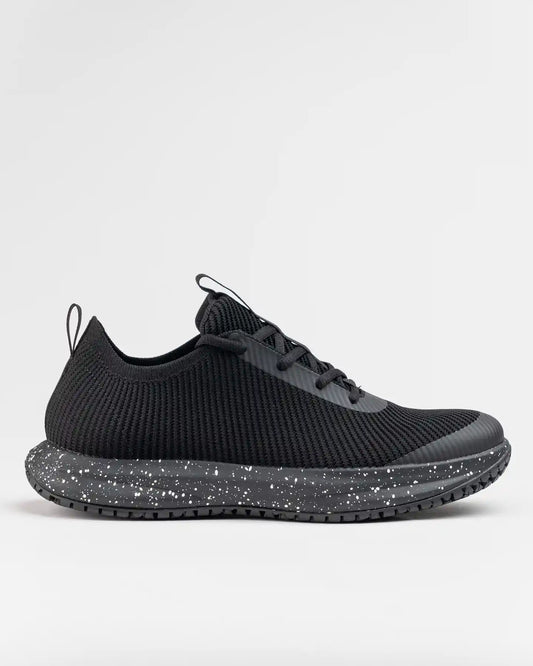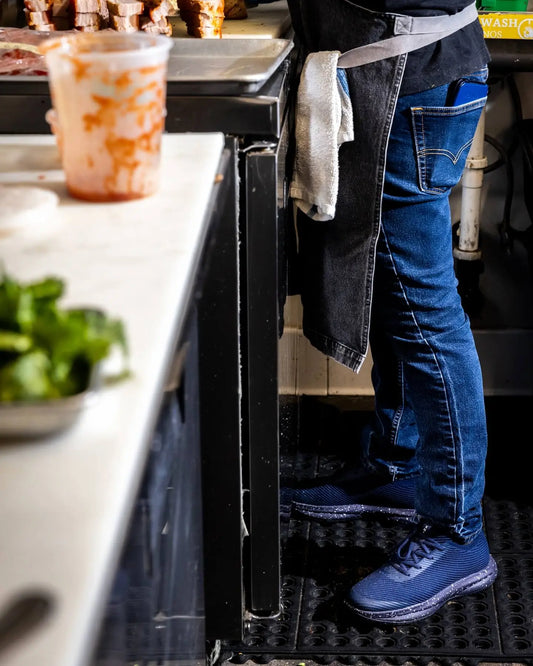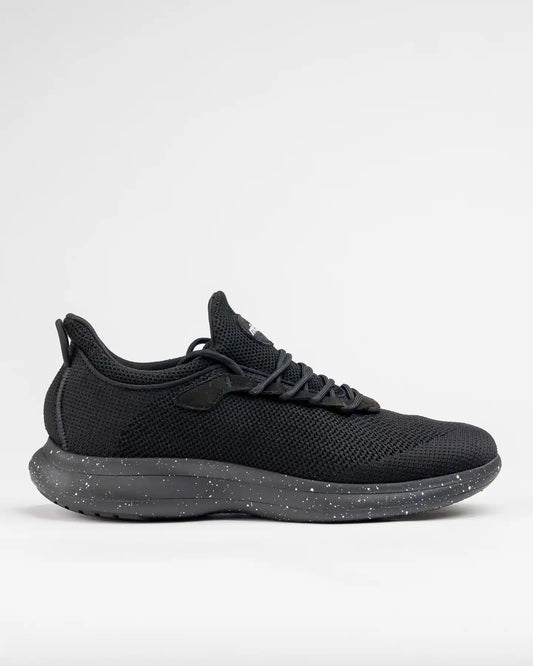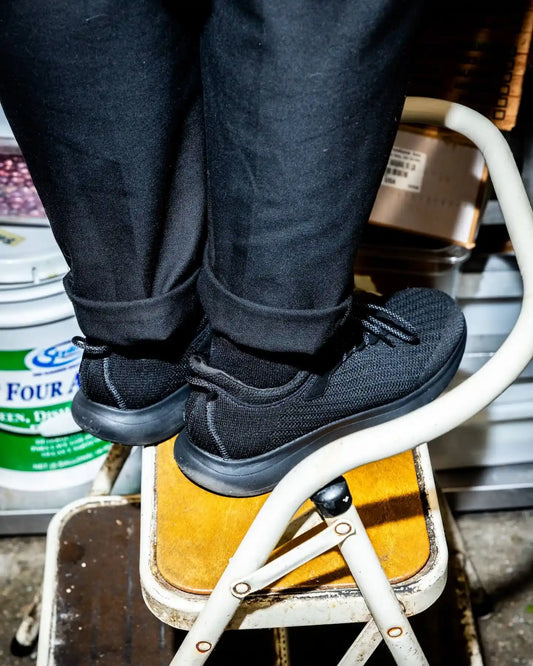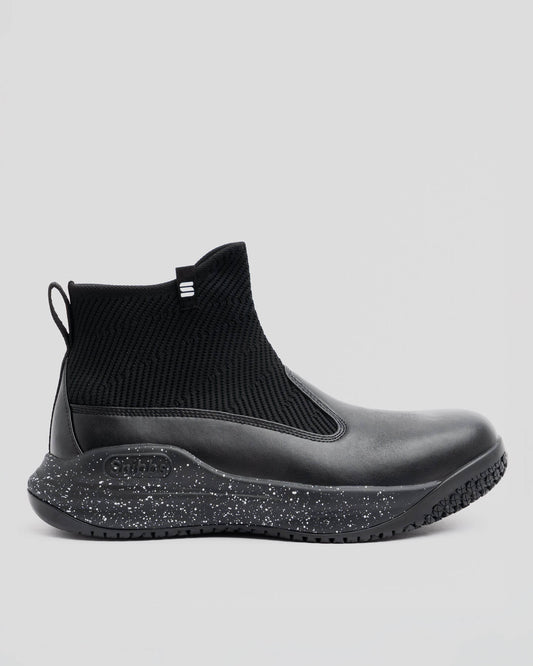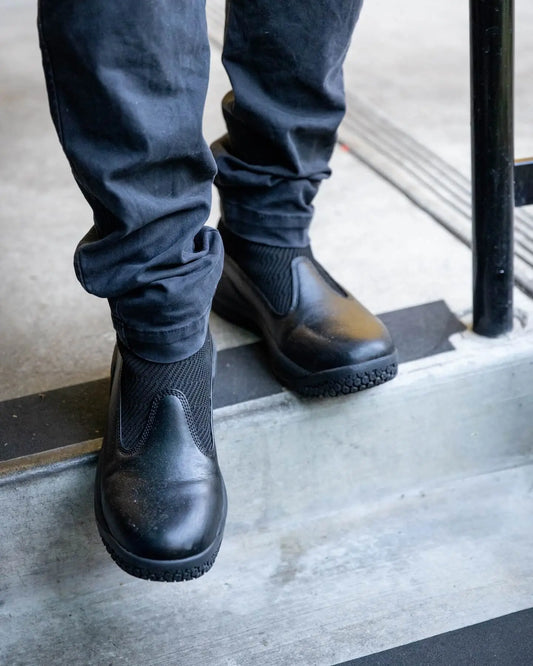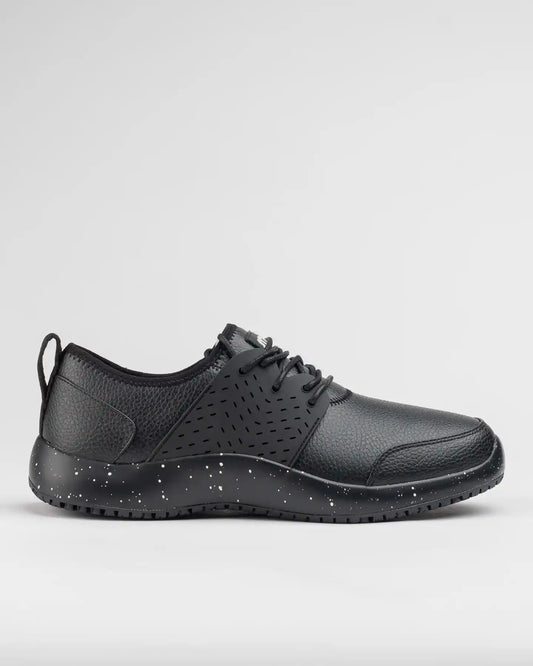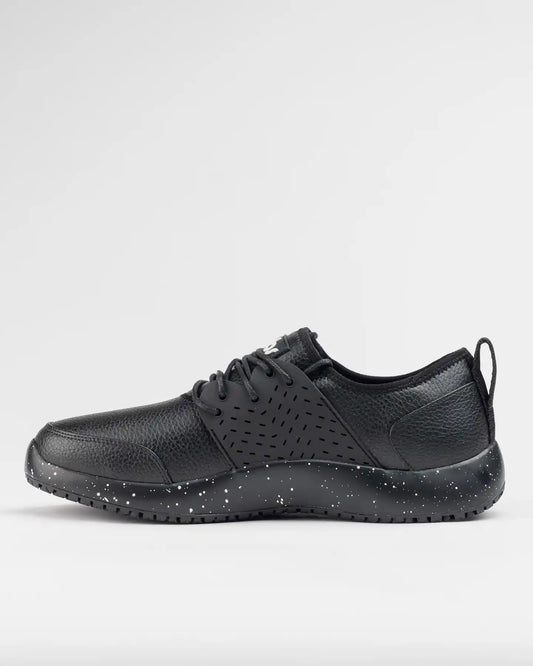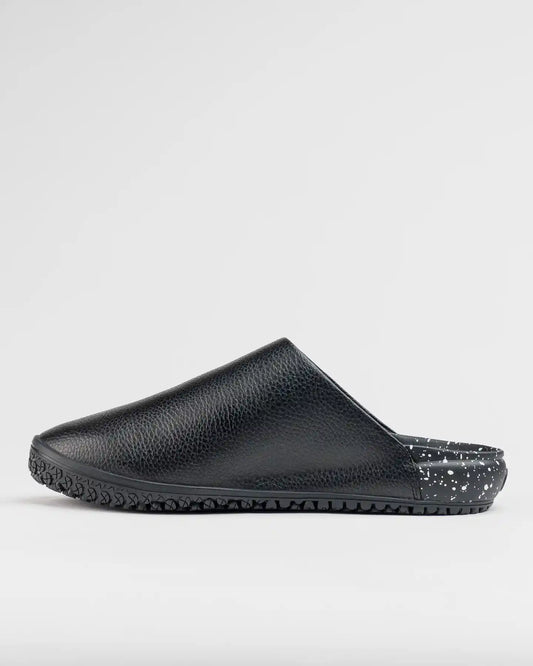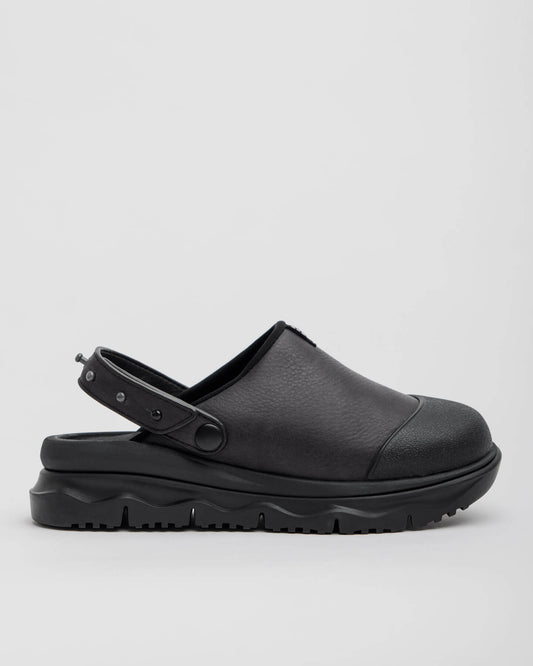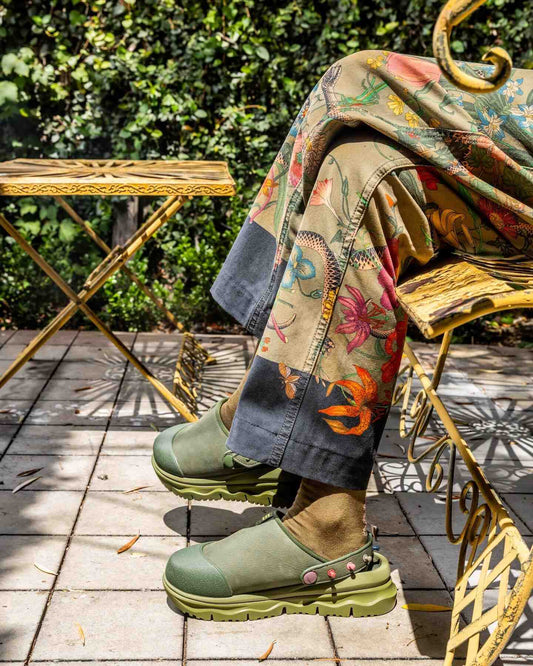What is Sustainable Footwear?
Alex Kinejara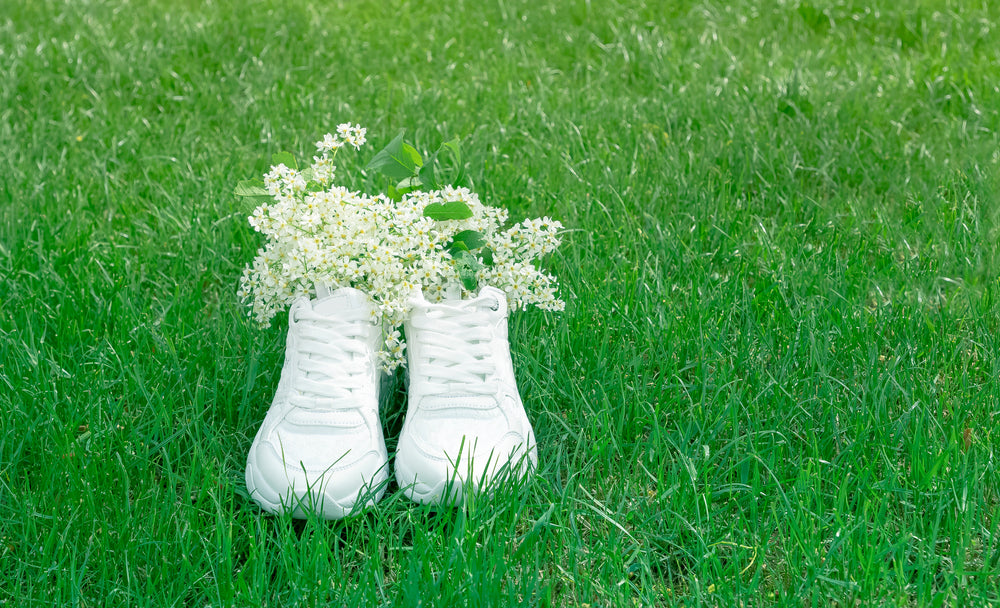
More and more companies, from giant tech corporations to big-box retailers of home goods, are examining the effect that their business practices have on the environment. And in response, they’re making changes that promote sustainability.
The shoe industry is no exception, with a diverse community of brands pouring time and resources into developing new ways to make shoes that don’t harm the ground we walk on.
The result is something known as sustainable footwear—footwear that meets each of your shoe requirements, like comfort, durability, and affordability, without compromising the planet. To that end, this article goes into everything you need to know about the sustainable footwear market, from the sustainable materials used to make them to the standard production methods and requirements.
#1 Sustainable Footwear Uses Natural Fibers
What is sustainable footwear?
It’s footwear that’s manufactured in a way that intentionally minimizes its environmental impact. Like all sustainability efforts, it’s focused on making shoes that fulfill our footwear needs through sustainable methods that allow future generations to live comfortably.
The first hallmark of sustainable shoes is that they’re made from natural material and fibers. Natural fibers aren’t produced in a laboratory by a team of scientists. Instead, they’re derived from natural resources that include animals, plants, and minerals.
Natural fibers include a range of materials, from those you encounter every day to some that you maybe haven’t heard of. Some of the most popular natural fibers include:
Natural fibers are an increasingly popular way for sustainable shoe brands in the footwear industry to promote sustainability and lessen the environmental impact of their companies.
But how can sustainable footwear benefit consumers?
By purchasing sustainable footwear instead of footwear from a shoe brand that harms the environment, you’re making a choice that decreases your own carbon footprint and mitigates environmental pollutants.
Additionally, footwear from a sustainable shoe brand is high-quality since natural fibers are more durable and absorbent than synthetic materials.10
#2 Sustainable Footwear May Also Use Repurposed Materials
Sustainable footwear doesn’t exclusively include materials that occur naturally in the world, like wool or hemp fabrics. Sometimes, sustainability means limiting the amount of waste we’re collectively producing by reusing materials that might otherwise end up in the landfill.
That’s why sustainable footwear also includes recycled shoes that are made from repurposed materials.
Repurposed material refers to material waste that’s recycled or reused for a purpose other than its original use. Repurposing can happen on a small scale, like when you co-opt canning jars to hold tea candles or save your yogurt containers for food storage. But it also happens on a large scale when manufacturers use recycled materials to make new products.
Sustainable developments in slip resistant shoes or footwear in general have led to the emergence of several recyclable materials that can be reused in sneaker manufacturing.11 Popular options include:
Reuse is a highly important aspect of sustainability. In fact, in many cases, reusing materials is more beneficial than recycling them since reuse doesn’t require the energy or waste production that comes with recycling.17
#3 Sustainable Footwear Is Ethically Manufactured
When it comes to footwear, sustainability doesn’t stop with using natural fibers or recycled materials. It’s just as important that the shoes are ethically and responsibly manufactured in a way that protects not only the environment but also the people who make your sneakers.
The history of unethical labor practices in the shoe industry is no secret, from big shoe brands that pay pennies on the hour to those that force their workers to labor under dangerous conditions.18
Fortunately, a renewed focus on sustainability within the footwear industry emphasizes ethical production methods.
That being said, conscientious manufacturing practices must include:
-
Adequate training – Workers aren’t safe unless they’re given the proper training to work with machinery and other tools they need to do their jobs. Truly sustainable shoes are made by fully trained workers who are able to use their knowledge to minimize dangers on the job.
-
Safe work environments – The labs, factories, and distribution centers where your shoes come from must prioritize worker safety. That means that all sustainable fashion structures are compliant with local building codes, proper protective procedures are in place, and workers are provided with all necessary personal protective equipment.
-
Proper compensation – It’s important that sneaker manufacturers pay appropriate wages—especially in an industry with a history of forced labor practices.19
A truly sustainable pair of shoes meets each of these ethical standards and uses materials that put the environment first.
Snibbs: Where Style Meets Sustainability
When our slip resistant shoes are made with non-biodegradable or non-recyclable materials and crafted through unethical manufacturing practices, they can have a significant impact on our environment and community.
Fortunately, sustainable footwear puts environmentally safe practices first by producing shoes with recycled and reused materials that are often plant-based.
At Snibbs, it’s our mission to make sustainable work shoes accessible. Nearly 100% of our athletic shoe materials are from plant and recycled materials, like recycled plastics, cottons, and polyurethane. Even our packaging is made from 100% recycled cardboard.
And we do it all while still delivering on everything you need from your work shoes, like comfort, slip-resistance, and stain-fighting features for quick cleaning—all in eye-catching styles you love.
Ready to make a sustainable decision when it comes to your work shoes? Shop Snibbs today.
Sources:
- Masterclass. Fabric Guide: What is Silk? How to Use and Care For Silk. https://www.masterclass.com/articles/fabric-guide-what-is-silk-how-to-use-and-care-for-silk-fabric
- Good On You. A Quick Guide to Organic Cotton. https://goodonyou.eco/know-your-product-a-quick-guide-to-organic-cotton/
- Hemp Eyewear. A Brief HIstory of Hemp. https://hempeyewear.com/blogs/blog/the-history-of-hemp
- Masterclass. Guide to Wool Fabric: 9 Types of Wool. https://www.masterclass.com/articles/guide-to-wool-fabric#9-different-types-of-wool
- Council of Fashion Designers of America. Flax (Linen). https://cfda.com/resources/materials/detail/flax-linen#
- Good On You. Material Guide: How Sustainable is Eucalyptus Fabric? https://goodonyou.eco/eucalyptus-fabric/
- The Guardian. Pulp Fabric: Everything You Need to Know About Lyocell. https://www.theguardian.com/fashion/2019/nov/18/pulp-fabric-everything-you-need-to-know-about-lyocell
- Revolution Fabrics. What is Jute Fabric? https://revolutionfabrics.com/blogs/gotcha-covered/what-is-jute-fabric
- Good On You. Material Guide: Is Leather Ethical or Sustainable? https://goodonyou.eco/the-hidden-costs-of-leather/
- MasterClass. Natural vs Synthetic Fibers: What’s the Difference? https://www.masterclass.com/articles/natural-vs-synthetic-fibers#advantages-of-using-natural-fibers
- Household Wonders. 6 Most Eco-Friendly Materials for Shoes. https://householdwonders.com/eco-friendly-materials-for-shoes/
- Diversity in Steam. These Shoes Are Made From Bamboo, Sugarcane, and Cork—And Are Entirely Carbon Neutral. https://diversityinsteam.com/2019/10/shoes-made-bamboo-carbon-neutral/
- How Stuff Works. Where Does Cork Come From? https://home.howstuffworks.com/question550.htm
- Panaprium. The Truth About Piñatex Pineapple Leather. https://www.panaprium.com/blogs/i/pinatex-pineapple-leather
- Recycled and Renewed. Top Eco-Friendly Shoes Made of Recycled Plastics. https://www.recycledandrenewed.com/top-eco-friendly-sneakers-the-best-shoes-made-from-recycled-plastic/
- EcoGreen. How Do Old, DIscarded TIres Affect the Environment? https://ecogreenequipment.com/how-do-old-discarded-tires-affect-the-environment/
- Clearance Solutions LTD. The Difference Between Recycling & Reusing. https://www.clearancesolutionsltd.co.uk/reuse-and-recycling/the-three-rs-the-difference-between-recycling-reusing/#
- Fast Company. Did a Slave Make Your Sneakers? The Answer Is: Probably. https://www.fastcompany.com/90279693/did-a-slave-make-your-sneakers-the-answer-is-probably
- Discourse Magazine. The China Challenge: The Stain of Forced Labor on Nike Shoes. https://www.discoursemagazine.com/economics/2022/01/05/the-china-challenge-the-stain-of-forced-labor-on-nike-shoes/

